Press release
A suite of camera traps supplied to WWF Conservation Champion farms in the Cape Winelands are revealing some surprise visitors – from leopards to aardwolf – and helping conservation-minded farmers better understand how to manage their veld.
The 10 cameras, sponsored by the GEF 5, are being deployed on farms which have signed legal agreements with WWF to co-create management plans for their remaining natural areas.
Shelly Fuller, Manager of the WWF Fruit & Wine Programme, explains: “When landowners see all these amazing creatures captured on camera it spurs a curiosity to understand their natural veld better and, ultimately, to protect it. With our support, these images can help the farms make more accurate local biodiversity assessments and they can be shared with our partners, like the Cape Leopard Trust.”
As a non-invasive monitoring method, camera traps are an effective, accurate and rapid means of compiling species richness estimates of medium to large terrestrial mammals. An added advantage is that they are like permanent fieldworkers, working day and night, in rain or sunshine. They are non-selective, capturing everything that moves, thus providing the ideal opportunity to gather data.
Some recent images captured by the WWF-sponsored cameras include some surprise visitors at Gabriëlskloof, close to the N2 near Bot River, where more than one leopard has been photographed as well as an elusive aardwolf, a nocturnal carnivore that feeds primarily on termites. Other more common captures include baboons and common duikers.
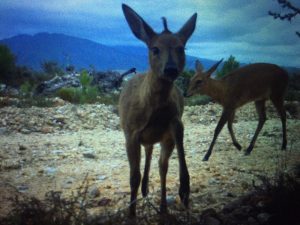
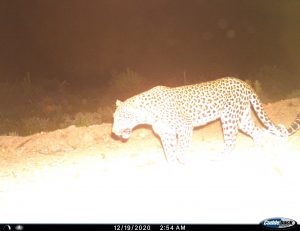
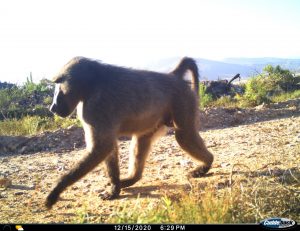
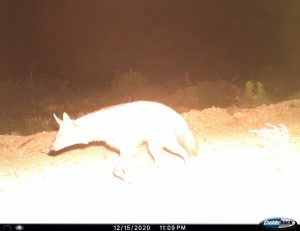
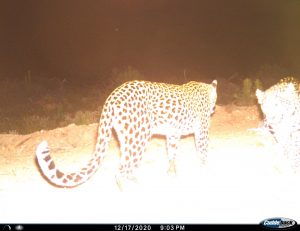
More about the wildlife of the Cape Winelands
The leopard still tops the food chain and occurs surprisingly close to Cape Town. There are leopards in the Kogelberg, Groenlandberg and Hottentots-Holland mountains though they are far smaller than the leopards of the Kruger National Park due to a restricted diet. Camera-trapping has proved to be a very effective way of estimating the numbers of these elusive and nocturnal predators.
Other predators include caracal, Cape clawless otter, large and small spotted genet, various mongoose species and the Cape fox. Many of these mammals are nocturnal and/or secretive and spotting them is usually all about luck.
Photographs of leopards are an exceptionally useful tool, since each leopard has a distinctive spot pattern by which it can be identified, like our fingerprints. Ideally a camera station should consist of two cameras opposite each other. Such double stations are used to compile “leopard identikits”, photos of both an individual’s left and right flanks, which are crucial in estimating the number of individuals in an area.
Although many large mammals (like rhinos, lions and even elephants) have been locally extinct in the Cape for many years due to agriculture encroachment and hunting in colonial times, there are still many smaller mammals to be found. These include small antelope (klipspringer, Cape grysbok, common duiker, grey rhebok), baboons, and rodents, ranging from the porcupine to the striped mouse and dassies.
Photos supplied by WWF SA.
Relevant pages on AgribookDigital include “Wine and wine grapes“, “Wildlife on farms” and “Conservancies and farming“.
